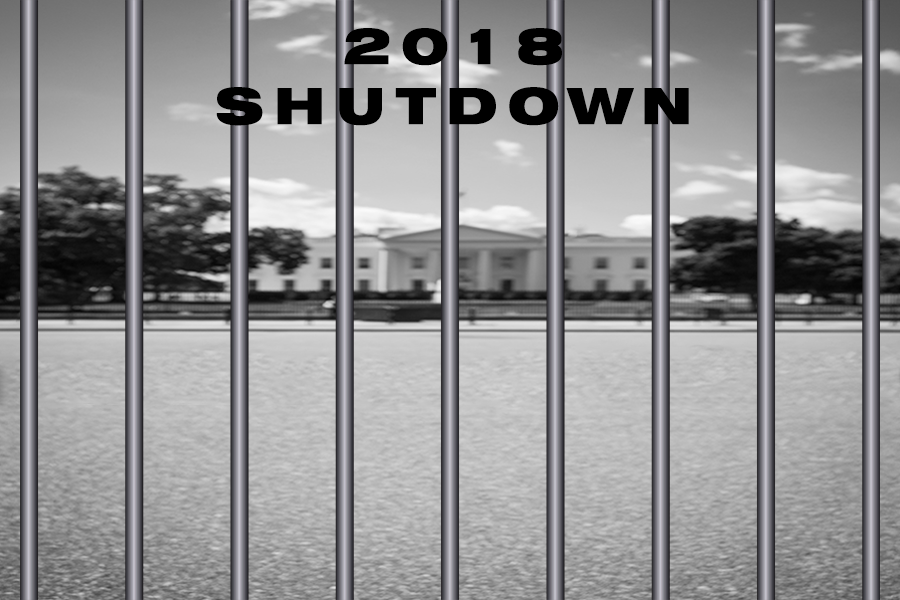The 2018 – 2019 Government Shutdown: Longest in US History
January 15, 2019
On December 21st, several federal agencies and departments shut down because of a failure to reach an agreement on funding for President Trump’s border wall.
If you have paid any attention to the news recently, chances are you’ve already heard about the shutdown taking place. In the past, there have been 18 partial shutdowns and 2 total shutdowns of the U.S. Government. Each of the shutdowns have had different underlying causes, but they are all tied together through one thing: the failure to pass a budget.
Throughout the negotiations, the main point of contention was over funding President Trump’s border wall, a key promise made during his campaign. Trump requested around $5 billion in funding for a wall to line the border between Mexico and the United States, which Democrats refused to pass funding for. Trump stood his ground, and as a result, a budget was not passed, and the government shut down the following day.
The president has been adamant about maintaining a wall along the border of the U.S. and Mexico, and has continually made remarks defending the need for a wall. On Twitter, he stated, “The Democrats, much as I suspected, have allocated no money for a new Wall. So imaginative! The problem is, without a Wall there can be no real Border Security – and our Country must finally have a Strong and Secure Southern Border!” His claims have gone so far as to say he is “proud to shut down the government,” and stating he will “take the mantle of shutting it down”.
The shutdown affects over 800,000 federal employees, including those who work at Redstone Arsenal. Non-essential employees have been furloughed, while employees deemed essential are required to work without pay, with the promise of back pay once the government reopens. This has affected hundreds of workers within our community, one of them being Raymond Hasenyager, a Lead Logistics Management Specialist for the Army. The current shutdown does not affect him or his family, but in the past, he has been put out of work as a result of a shutdown. While his views do not represent the U.S. Army’s views, Hasenyager stated, “It’s just a poor way to run business. I’m a small government guy, but there’s no effectiveness gained by anybody during a shutdown. If you don’t want people working, then you shouldn’t hire them.” He continues to work through the partial shutdown, while others within agencies such as NASA have been furloughed and sent home until the government reopens.
On January 12th, the 2018 – 2019 government shutdown became the longest in US history, recently beating out the 21-day full government shutdown that happened in 1995 – 1996 under the Clinton administration. The Democrats have negotiated several different compromises in order to reopen the government, but President Trump still demands his $5 billion for the wall.
The government shutdown, at the time of this article being published, is still continuing, but there have been ongoing discussions as to what could be done to reach an agreement. Nobody is completely sure how long this could go on for, and not many are completely sure what the President has planned for the shutdown. An unnamed Republican close to the White House told Politico’s Nancy Cook in an interview, “No one knows what he will do, and the president has not decided yet, so it keeps everyone guessing. This could go on another week and he could declare an emergency, or this will go on until February.” Either way, the economic impact from this shutdown could be lasting, and until the government reopens, the nation will be waiting to see what will happen on Capitol Hill.


